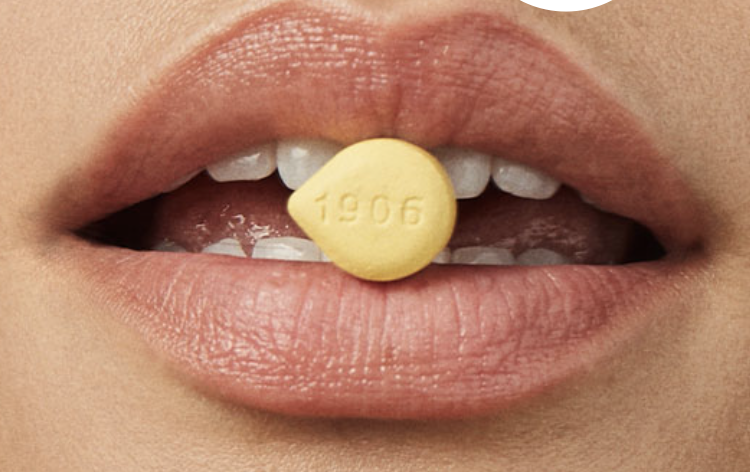1906 New Highs is a line of low dose cannabis edibles created for functionality in day-to-day life. Products include pills, chocolate gems, and chocolate beans. New Highs offers six different formulations for six different effects: the Go line for energy, Genius for brain power, Bliss for happiness, Love for arousal, Chill for relaxation, and Midnight for sleep. All products are vegan, gluten free, calorie free, and fast acting. 1906 offers a unique way to enjoy cannabis with all these variations to choose from, conveniently contained in sustainable packaging.

Key Ingredients
Medicinal cannabis comes in a wide range of forms. Each of the formulas that 1906 New Highs offers are designed to be a natural enhancer for the body as well as the brain. In their “Go” line of edibles, for example, there are four key ingredients: Theobromine, Galangal, L-Theanine, and caffeine.
Theobromine is an alkaloid found in the cacao plant. It can lower blood pressure and increase blood flow to the brain. Galangal is a plant similar to ginger that can “enhance alertness and focus for up to five hours.” L-theanine is an amino acid derived from green tea that can stimulate “the brain’s alpha waves to provide a calming and serene experience.” Caffeine is known to be stimulating and energy boosting. When combined with these other ingredients, it can provide a “clean, calm, and lucid focus” without jitters or anxiety.
Explore all six of the unique formulas of 1906 New Highs edibles here.
Testimonials refer to New Highs’ products as “euphoric” during exercise, “exactly the way I like…fast-acting and barely perceivable,” and “next level howling at the moon-type magic,” per Cosmopolitan. That sounds pretty amazing. Read press testimonials, news articles, and more on their website.
The 1906 New Highs products are available online and in dispensaries in Arizona, Colorado, Illinois, Massachusetts, Michigan, Oklahoma, Ohio, and Pennsylvania.
Cannabis History in the United States
1906 New Highs chose their name to reflect the history of the plant in this country. The turn of the 20th century was the last time that cannabis use was widely accepted in society as a medicine. In 1906, society rapidly underwent a shift from cannabis acceptance to total prohibition. President Roosevelt signed into action the 1906 Food and Drug Act, also known as the Wiley Act. Product labeling and the sale of drugs became stricter and needed approval from United States Pharmacopeia and the National Formulary.
In many ways, this act protected the American people from false labeled products. It ensured any ingredients deemed dangerous, which at the time included heroin and cocaine, must be clearly labeled. As well as having the amount of each ingredient be declared on the packaging. The Food and Drug Act greatly focused on banning chemical additives to food, but also led to complete prohibition of cannabis by the 1937.
Over the decades, cannabis was still used for medicinal purposes but faced major pushback from the government. For instance, in the 2001 case, United States v. Oakland Cannabis Buyers’ Cooperative, the Supreme Court stated cannabis was, “not currently accepted medical use” in accordance with a law passed in the 1970s. However, the first wave of the fight for decriminalizing cannabis also began around the 1970s.
After decades of amendments and setbacks, Colorado and Washington became the first two states to legalize recreational use of cannabis in 2012. By now, over half the states have legalized cannabis for recreational and/or medical use. Most recently, President Biden has pardoned thousands of those charged with simple possession of cannabis. We have come a long way since 1906, in many ways, and hopefully will continue to see the growing acceptance of cannabis.
More Content
THE RELATIONSHIP BETWEEN BACKWOODS AND HIP-HOP
TERPENES FOR ANXIETY: 3 TERPS IN CANNABIS WITH STRESS-RELIEVING PROPERTIES
RAPPER WEED: WHICH RAPPERS HAVE CANNABIS PRODUCTS IN THE MARKET? WHO ACTUALLY HAS THE FIRE?
18 COMPANIES THAT DON’T DRUG TEST THEIR EMPLOYEES FOR WEED
7 TIPS FOR MARKETING CANNABIS AND CBD ON TIKTOK AND INSTAGRAM








